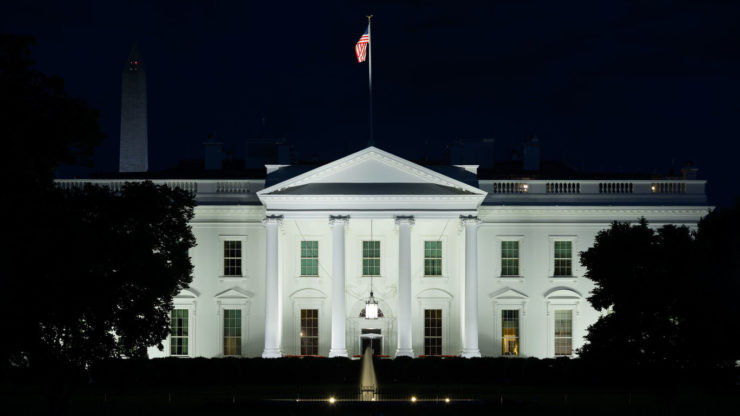The absence of a female president in the United States, a nation celebrated for its values of equality and progress, remains a stark anomaly.
Despite considerable advancements in gender equality, the highest office in the land has yet to be occupied by a woman.
This issue has become more urgent with President Joe Biden deciding to withdraw from the re-election race, leading to Vice President Kamala Harris becoming the likely Democratic nominee.
However, the journey to breaking this barrier is fraught with deeply rooted societal obstacles and systemic challenges.
Kamala Harris: A new chapter in US politics?
The nomination of Harris as Biden’s successor highlights both progress and persistent challenges.
Harris, in her statement, expressed gratitude for Biden’s support and outlined her vision for uniting the Democratic Party and the nation against Donald Trump’s agenda.
I am honored to have the President’s endorsement and my intention is to earn and win this nomination. Over the past year, I have traveled across the country, talking with Americans about the clear choice in this momentous election. And that is what I will continue to do in the days and weeks ahead. I will do everything in my power to unite the Democratic Party—and unite our nation—to defeat Donald Trump and his extreme Project 2025 agenda.
California Governor Gavin Newsom has also publicly praised Harris, highlighting her resilience and tenacity in the face of political adversity. Newsom’s support underscores his confidence in Harris’s ability to lead the charge against Trump’s controversial policies.
Conversely, Republicans have criticized Harris, aligning her with Biden’s perceived failures and highlighting the political contention surrounding her potential presidency.
Meanwhile, a recent YouGov poll reveals a complex landscape of support for Harris. While 60% of Democratic voters favor her nomination, 21% prefer other candidates, and 19% remain undecided.
In hypothetical match-ups with Trump, Harris trails slightly, reflecting a tight race that underscores the volatility of current electoral dynamics. Independent voters show less enthusiasm, with only 30% supporting Harris.
According to Statista data, 6 in 10 Democrats prefer Kamala Harris as a contender, with the rest undecided.
Source: Statista
Gender bias in American politics
Despite advancements in gender equality, deeply entrenched cultural and systemic biases continue to impede women’s progress in politics.
Adelys Ferro, a Democrat analyst and activist, emphasizes that the lack of a female president reflects persistent gender bias rather than a deficit of capability among women.
Ferro argues that the barriers women face are rooted in cultural prejudices that create an exclusionary atmosphere in political and corporate arenas.
“Despite women’s preparedness and qualifications, societal biases continue to hinder their progress to the highest levels of authority,” Ferro explains. This bias perpetuates a male-dominated political landscape, making it challenging for women to ascend to the presidency.
Progress and persistent challenges
The progress of women in US politics is evident, yet insufficient for a breakthrough presidency.
According to a 2024 report by the Center for American Women and Politics, women hold a record 25% of Senate seats and 28.2% of Congressional seats.
While these numbers represent progress, they fall short of ensuring a female presidency.
Ferro points out that societal and political leaders remain hesitant to elect a female president due to lingering stigmas and misconceptions about women’s readiness for the highest office.
The slow and arduous journey toward achieving gender parity in US politics is further complicated by entrenched biases and cultural expectations.
Source: Center for American Women and Politics
Running for the presidency presents unique challenges for women, including securing financial resources and campaign support.
Historically, women have faced obstacles in obtaining the necessary funding and networking opportunities, putting them at a disadvantage compared to their male counterparts.
This financial disparity limits their ability to compete on equal footing, reinforcing the male dominance in politics.
International examples of female leadership
While the US has yet to elect a female president, other countries have successfully navigated this barrier.
Angela Merkel (Germany), Jacinda Ardern (New Zealand), Tsai Ing-wen (Taiwan), and notable Latin American leaders such as Michelle Bachelet (Chile) and Dilma Rousseff (Brazil) demonstrate that women can lead effectively at the highest levels of government.
These examples underscore the possibility for change in the US political environment and highlight the need to remove the constraints preventing the election of a female president.
Encouraging female candidates and election
Fostering an equitable political landscape involves recognizing and valuing women’s leadership capacities.
Ferro highlights the progress women have made in executive roles, noting that their increasing presence in leadership positions reflects a shift toward broader acceptance of female leaders.
She advocates for a focus on candidates’ qualifications and policies rather than gender, to promote a more inclusive political environment.
Popularity vs. policy in US presidential elections
US presidential elections often prioritize popularity over substantive policy discussions, posing challenges for female candidates.
Ferro expresses concern that the focus on charisma and populism undermines the importance of governance and policy impact.
She argues that a shift toward evaluating candidates based on their policy agendas and qualifications rather than their appeal could foster a more inclusive political environment.
The journey toward electing a female president in the United States remains complex, with deeply rooted cultural biases and systemic barriers.
However, as women continue to demonstrate their capabilities in leadership roles, the prospect of achieving this milestone becomes more feasible.
By promoting a more informed and equitable political landscape, the US can move closer to ensuring that the presidency is accessible to all qualified candidates, regardless of gender.
The post Breaking barriers: Why the path to a female US presidency remains elusive appeared first on Invezz
